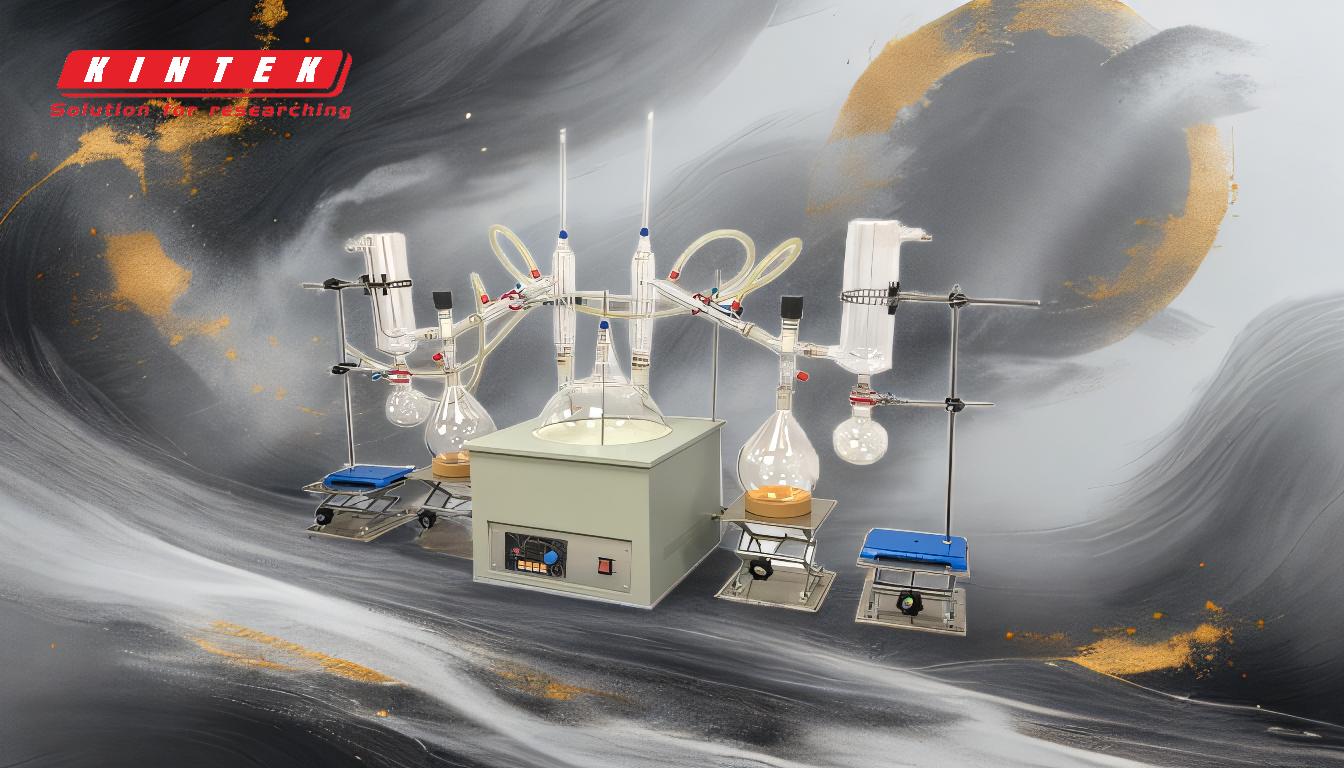Short path distillation is a highly efficient separation technique that leverages differences in the boiling points of components in a mixture under reduced pressure. The process involves heating the mixture in a flask while applying a vacuum to lower the boiling points, allowing heavier molecules to evaporate more easily. The vapors travel a short distance through a fractionating tube, where they cool, condense, and are collected in separate flasks based on their weight. This method is compact, minimizes distillate loss, and is ideal for refining heat-sensitive materials. The process can be repeated for optimal separation and purity.
Key Points Explained:

-
Reduction of Pressure and Lowering of Boiling Points:
- A vacuum is applied to the distillation flask, reducing atmospheric pressure. This lowers the boiling points of the components in the mixture, enabling the evaporation of heavier molecules that would otherwise require much higher temperatures.
- This step is crucial for heat-sensitive materials, as it prevents thermal degradation.
-
Heating and Evaporation:
- The mixture is placed in a feed vessel and transferred to a heated flask. The temperature is gradually increased to preset levels, causing specific components to evaporate based on their boiling points.
- The heating process is controlled to ensure precise separation without overheating the mixture.
-
Short-Distance Travel of Vapors:
- The term "short-path" refers to the minimal distance vapors travel from the heated flask to the condensing unit, typically just a few centimeters.
- This short travel distance minimizes the loss of distillate and ensures efficient separation.
-
Fractionation and Condensation:
- The vapors are drawn into a fractionating tube, where they cool and condense. During this process, the vapors may re-vaporize and condense multiple times, further refining the separation.
- The condensed liquid is then directed into a condensing tube, where it is cooled by a recirculating chiller or similar system.
-
Collection of Fractions:
- The condensed components are collected in separate receiving flasks based on their weight and boiling points.
- This allows for the isolation of specific fractions, which can be further refined or used directly.
-
Repeatability for Optimal Separation:
- The process can be repeated multiple times to achieve higher purity and separation of components.
- Each cycle refines the mixture further, making short-path distillation ideal for applications requiring high-purity products.
-
Applications and Advantages:
- Short-path distillation is widely used in laboratories and industries for refining heat-sensitive materials, such as essential oils, cannabinoids, and pharmaceutical compounds.
- Its compact design, minimal instrumentation footprint, and ability to handle complex mixtures make it a versatile and efficient separation technique.
By understanding these key points, one can appreciate the precision and efficiency of short-path distillation, making it an invaluable tool for separating and refining complex mixtures in both laboratory and industrial settings.
Summary Table:
| Key Aspect | Description |
|---|---|
| Pressure Reduction | Lowers boiling points, enabling evaporation of heavier molecules under vacuum. |
| Heating & Evaporation | Controlled heating ensures precise separation without overheating the mixture. |
| Short-Distance Travel | Minimizes distillate loss and ensures efficient separation. |
| Fractionation & Condensation | Vapors cool, condense, and refine multiple times for high-purity separation. |
| Collection of Fractions | Components are collected in separate flasks based on weight and boiling points. |
| Repeatability | Multiple cycles refine the mixture for optimal purity and separation. |
| Applications | Used for essential oils, cannabinoids, pharmaceuticals, and other heat-sensitive materials. |
Optimize your separation process with short-path distillation—contact our experts today to learn more!











